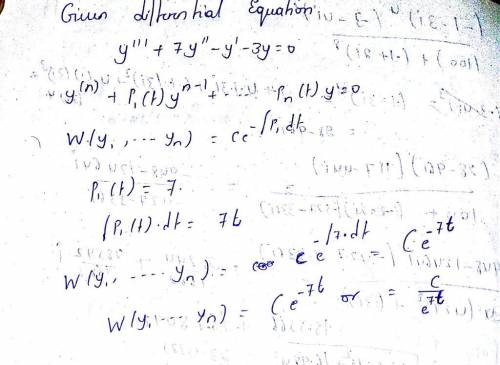
Mathematics, 15.04.2020 22:06 shaniahharrisoov3lqv
For the differential equation y(n)+p1(t)y(n−1)+ ... +pn(t)y=0 with solutions y1, ..., yn Abel's formula for the Wronskian is W(y1,...,yn)(t)=Ce−∫p1(t)dt. Use Abel's formula to find the Wronskian of a fundamental set of solutions of the differential equation y′′′+7y′′−y′−3y=0.

Answers: 2


Other questions on the subject: Mathematics



Mathematics, 22.06.2019 02:30, GreenHerbz206
Researchers are conducting experiments to determine the role of alcohol in the development of depression. after the study is complete, they determine that the relative risk of developing depression is 1.55 with a 95 % ci of 1.2 -1.9. each group is then divided into nonsmokers and smokers. the relative risk for the nonsmokers is 1.12 with a 95% ci of 0.87-1.37. the relative risk for the smokers is 1.7 with a 95 % cl of 1.5-1.9. what type of bias may affect this study? a. procedure bias b. recall bias c. selection bias d. confounding e. lead-time bias
Answers: 2

Mathematics, 22.06.2019 03:00, breasiasamuel7053
Your friend, taylor, missed class today and needs some identifying solutions to systems. explain to taylor how to find the solution(s) of any system using its graph.
Answers: 1
You know the right answer?
For the differential equation y(n)+p1(t)y(n−1)+ ... +pn(t)y=0 with solutions y1, ..., yn Abel's form...
Questions in other subjects:



English, 06.04.2021 07:40










